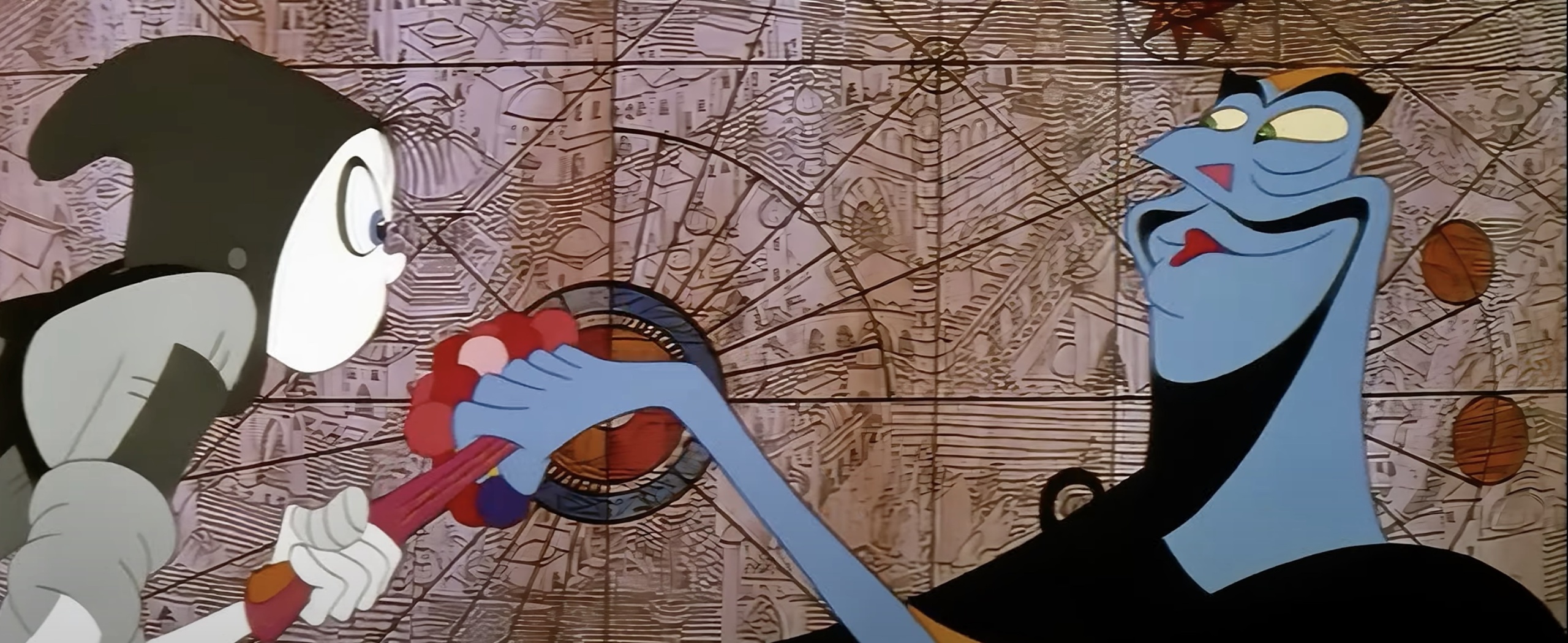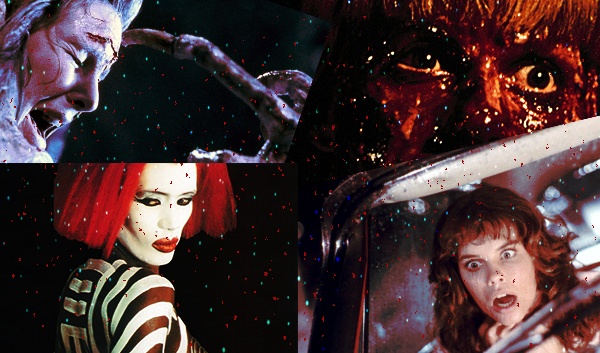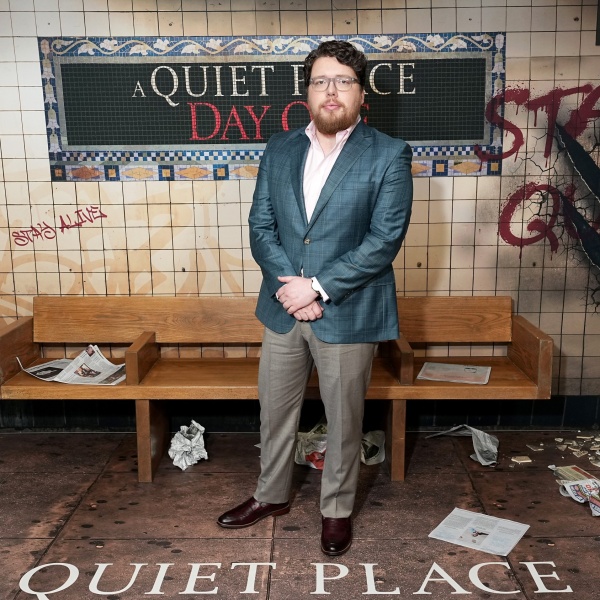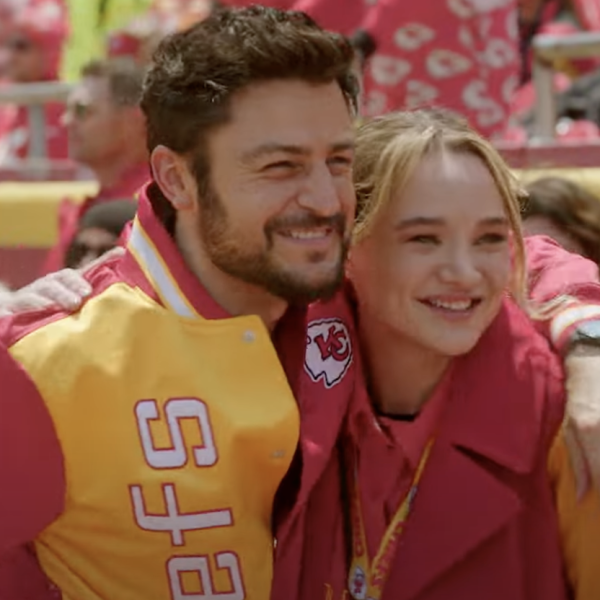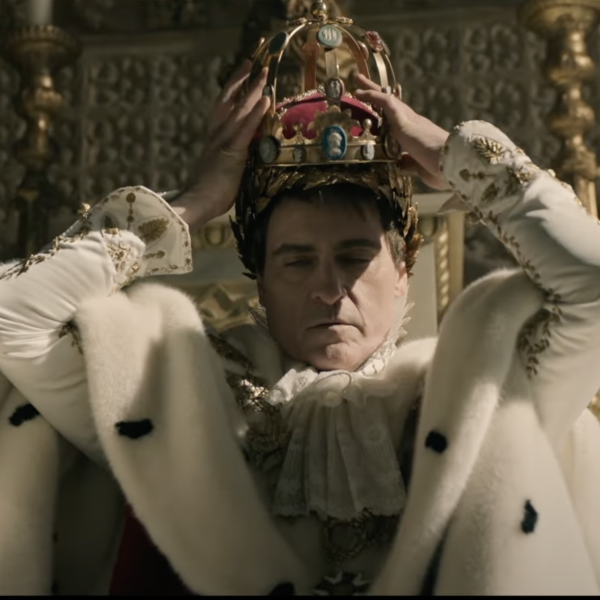“The best is yet to come,” Richard Williams said as he accepted a Special Achievement Award for his work on “Who Framed Roger Rabbit?” during the 1988 Academy Awards. In retrospect, the Canadian animator was referring to “The Thief and the Cobbler,” a film he had been working on for close to 30 years and would continue to work on for many more to come.
“The Thief and the Cobbler” began as an adaptation of Afghan writer Idries Shah’s “The Exploits of the Incomparable Mullah Nasrudin.” When agreements between Williams and the Shah family fell through, the former reinvented the production by coming up with an original, Middle East-themed story. The folkloric hero was replaced by a nameless thief, as well as a cobbler named Tack. Both characters would be mute, relying on physical comedy in the spirit of Charlie Chaplin and other silent movie stars, while the film’s cartoony style made way for organic and highly detailed realism that would go above and beyond the standard set by prewar Disney.
Williams was notorious for his perfectionism, going over budget and deadline on nearly every project. He not only wished for “The Thief” to become his magnum opus but the most ambitious animated film ever created. Where most studios animated on twos, meaning 12 unique drawings per second of footage, Williams animated the entire film on ones, or 24 drawings per second, giving it the same fluidity as live-action.
Williams’ animation studio in London was set up differently from those of his competitors. “It was open-plan,” his son Alex told IndieWire. Alex was born three years after work on “The Thief” commenced and joined the production after finishing college. “Dad’s desk was right in the middle. If you needed a drawing, you could go right up to him and ask for one. It was a shock when I went to work at Disney and learned I didn’t have access to the directors except during scheduled visits.”
Early work involved little storyboarding, a standard practice Williams felt restricted his creative freedom. “None of us had a ‘big picture’ of what the film was going to be,” recalled animator Tony White. “I don’t think Dick did either, as he was always changing things.” Though perfectionistic, Williams was far from tyrannical. Instead of imposing a vision, he aimed for quality, pushing animators to improve and pitch their own ideas.
When Williams tapped Steven Evengelatos to animate a sequence in which the thief stumbles into a polo game, he wasn’t concerned that Evengelatos had zero experience animating horses. Accepting the responsibility, he not only brushed up on equine anatomy but also researched Persian carpets, incorporating their flat compositions and impossible bird’ s-eye perspective.
Perhaps the most impressive animation produced for the film is a chase in which Tack trails the thief through a palace filled with optical illusions. Doorways appear out of nowhere, while paths that lead upwards for one character inexplicably slant downwards for another. When Tack digs his heels into the ground to slow his momentum, Wile E. Coyote-style (Looney Tunes’ Ken Harris was one of the first animators Williams brought onto the project), spiral ornaments in the background turn to match his movement. “That wasn’t some kind of CGI trick,” Evengelatos said. “We actually measured the distance between each spiral-y disc and calculated the speed of the camera within a micrometer so that the background would slow down and spin.” In lieu of computers, the entire background had to be drawn on a single piece of paper measuring 25 feet in length. “We never knew if it was going to work until we shot it. Fortunately, it did.”
While Williams’ passion was infectious, the high expectations he set for his team could make him difficult to work with. “On my first day, I arrived late because the tube got delayed,” Evengelatos said. “Dick went on a rant, something he was famous for. He snaps and completely loses it. For a few weeks, he avoided me.”
Williams also made considerable sacrifices to continue working on “The Thief,” turning down offers to direct “Watership Down” and—following the success of “Roger Rabbit”—Disney’s “Beauty and the Beast.” While some animators, including White, went on to open studios of their own, others stayed in London until the bitter end.
And bitter it was. In 1992, after missing multiple deadlines and going over budget yet again, the film’s umpteenth investor, Warner Bros., decided to take matters into their own hands. “We were anxious,” Evengelatos said. “Still, no one believed they would take the film away from Dick. He became increasingly agitated and his outbursts got worse. One day he left for a week. It turned out he’d gone to Canada to buy a house on an island off the coast of Vancouver. He was planning for what was coming.”
As if losing control over “The Thief” wasn’t bad enough, Warner Bros. completely reworked the film to capitalize on the popularity of “Aladdin,” releasing it in 1992 as “The Princess and the Cobbler.” Outsourced animators padded the runtime with hastily produced narrative scenes, adding voiceovers and musical numbers. (Two years later, Miramax had the rights and released another version, titled “Arabian Knight.”)
“Contrary to everyone’s best wishes, I’m not suicidal,” Williams said when animation historian Tom Sito checked in on him. That’s not to say he was unaffected. Alex describes the fate of “The Thief”as “a disaster from which he never fully recovered — a death in the family.” Overnight, a film that had been ever-present in his life suddenly became taboo. Artists meeting him were warned not to mention “the feature,” and he promptly declined to speak to filmmaker Kevin Shreck for his documentary “Persistence of Vision,” chronicling production of “The Thief.”
Although “The Thief and the Cobbler” never got the theatrical release that Williams wanted, its legacy lives on. In 2007, animator Garrett Gilchrist began an ongoing effort to restore as much of the original film as possible, the latest iteration of which can be viewed on YouTube. While in Canada, Williams wrote “The Animator’s Survival Kit,” an instructional book that has become required reading for virtually every animation program in the world. His short film “Prologue” earned him his third and final Academy Award. He died on August 16, 2019.
Today, “The Thief and the Cobbler”is remembered as the greatest animated film that never was, while Williams himself is celebrated as an animator who pushed the medium forward when no one else was really trying to do so. More than an animator, Williams was an artist.
“A lot of people stop at the fact that he was a perfectionist without asking why he was that way,” said Shreck. “Williams saw animation as a legitimate art form, like painting or sculpture.” At a time when animation was regarded as cheap children’s entertainment, he showed it “doesn’t have to be cutesy or craft commercialism. It can and should be art, treated, and acknowledged as such. He saw a potential.”
